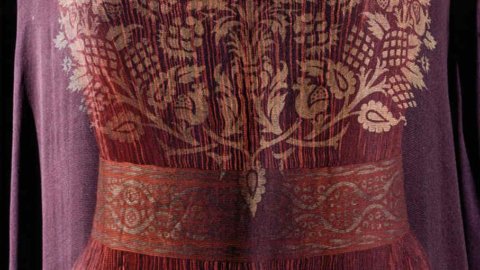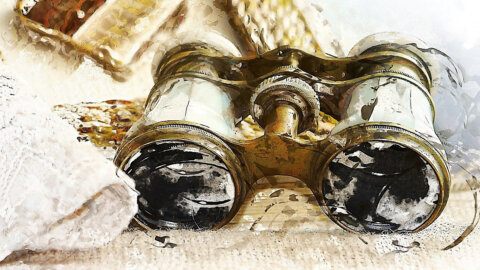Adèle Henriette Nigrin was born in Fontainebleau in 1877 and at the beginning of the 900th century, in Paris, she met Mariano Fortuny. He is an already well-known artist, engaged in the experimentation of a complex lighting system which, right from its first applications, will revolutionize theatrical scenography.
The meager biographical information does not tell us anything else, but it is certain that from 1902, for 47 years, Henriette will be at Fortuny's side, contributing in a decisive measure to the success of his extraordinary textile creations. In fact, we owe her the idea of the Delphos, the dress in very fine pleated silk, icon of a world-recognized style and symbol of timeless elegance. In the laboratory house of Palazzo Pesaro degli Orfei, Henriette supports her husband in the production of fine printed fabrics and silk lamps, coordinating the numerous workers who collaborate with them.
He also takes charge of the delicate relationships with an increasingly numerous and international clientele, leaving the Maestro the possibility of dedicating himself entirely to studies, research and experimentation in the various artistic disciplines. After her husband's death (1949) and the Fortuny Anonymous Company was sold to her friend Elsie McNeill, Henriette dedicated the rest of her life to complying with Mariano's testamentary dispositions - donating numerous works to Italian and Spanish museums - and to the inventory of assets of the palace, which he entrusted to the city of Venice upon his disappearance.
The exhibition, curated by Daniela Ferretti and Cristina Da Roit, is the result of the research, reorganization and maintenance work carried out during 2015 on the collections of the Fortuny Museum, through which it was possible to select, from a corpus of over twelve thousand originals between gelatin glass plates and celluloid films, two hundred photographs from the Fortuny photographic archive, which have been the subject of an important conservation and archival intervention, to which has been added the reorganization and computerization of the collection of matrices for printing on fabric .
On the occasion of the exhibition, some amateur films shot by Mariano in the 35s will also be visible to the public for the first time. These are recently discovered film materials, made up of films in pathè baby and XNUMX mm format, on which, thanks to the contribution of the Maison Vuitton, a technical restoration operation and digital transfer was carried out by the National Cinema Archive Company of Ivrea and of the La Camera Ottica and Crea laboratories of the University of Udine.





